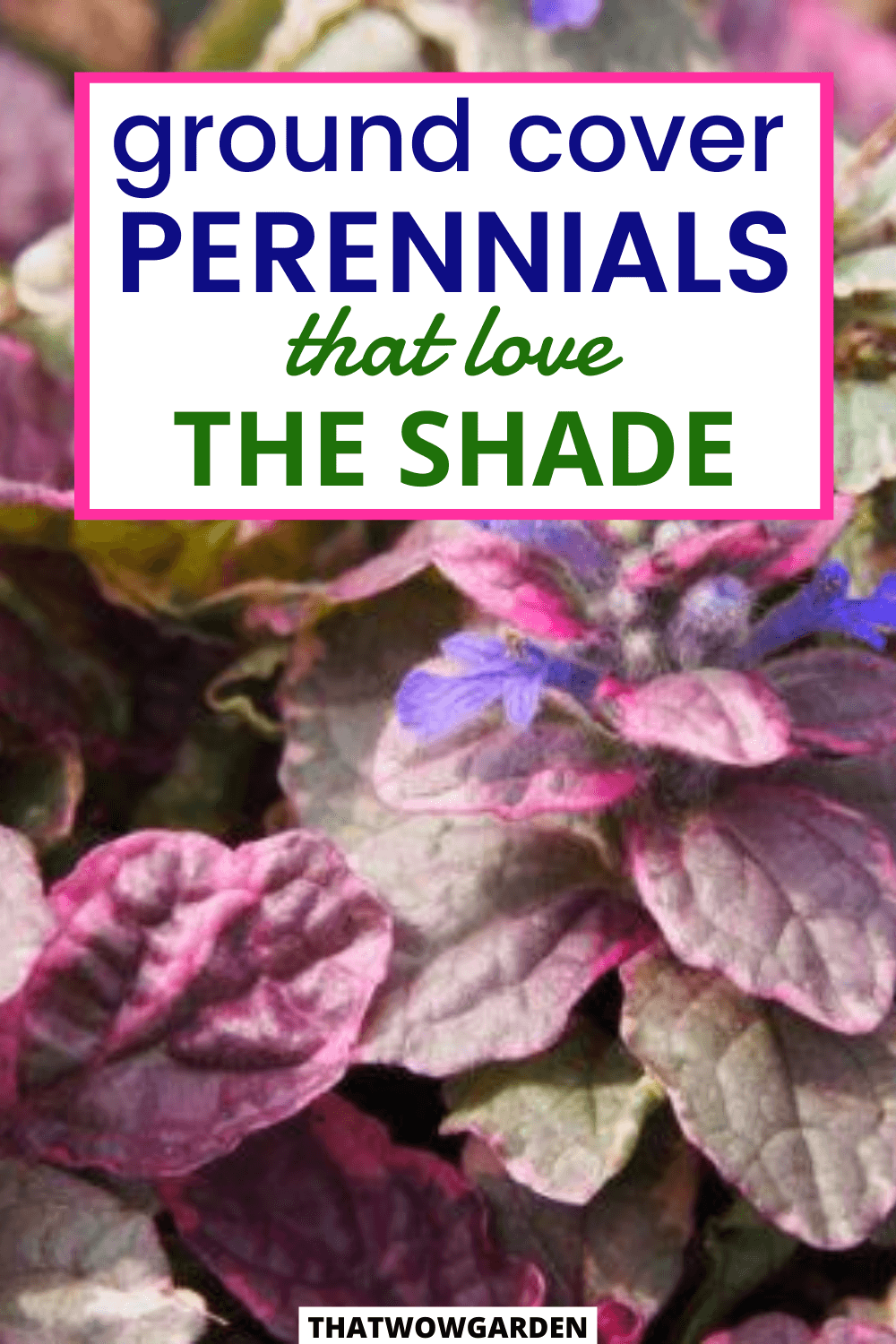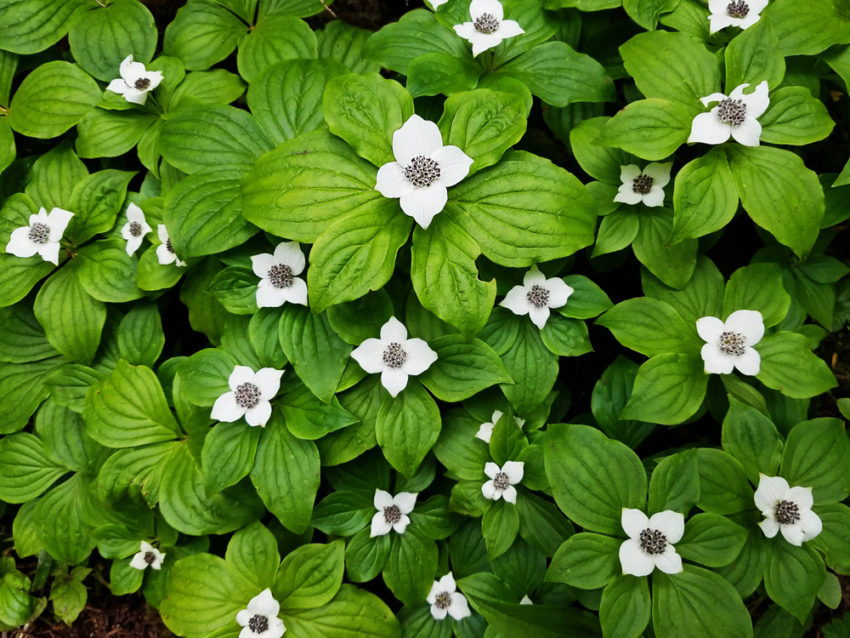Spring is nature’s way of saying, ‘let’s party!’ So it’s that time again when you’re bored and you’ve realized that you’re tired of working, Netflix, and people. Don’t freak out! It happens more often than you’d think. Why not plant a few perennial plants?
These types of plants can survive for multiple growing seasons, bloom into beautiful plants in the spring, and die back each winter. The net spring, they just grow once again from the same root! It saves both space and time to have perennials in your garden. Plus if you’re the type of person who, ahem, forgets to take care of the plant after sowing the seed, don’t worry!
These plants will thrive in the shade and won’t die, kinda like that time I accidentally killed a plant when I forgot to water it after 2 months. (Oops!) Let’s dive into the plants you can help grow and bring to life (unlike me, the queen of death and darkness).
1. Wild Ginger
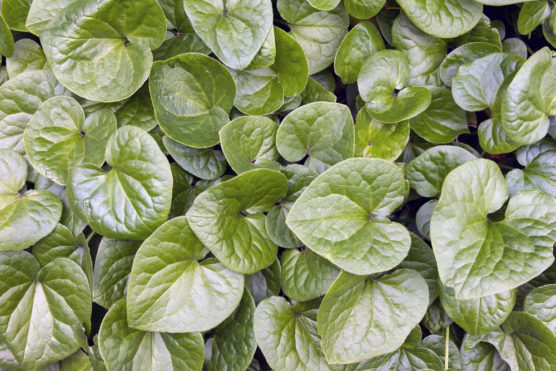
Wild ginger, while edible, should still be selected and eaten with precaution. No one wants a burning digestive system literally 2 minutes afterward. It will most definitely survive a large amount of neglect, so don’t worry.
Wild ginger has beautiful evergreen leaves that grow outwards, covering a lot of ground. It prefers acidic soil that is well-drained, and only requires partial sunlight. We don’t want a reenactment of the Jonas Brothers’ burning up by exposing the plant to too much sunlight.
2. Bunchberry
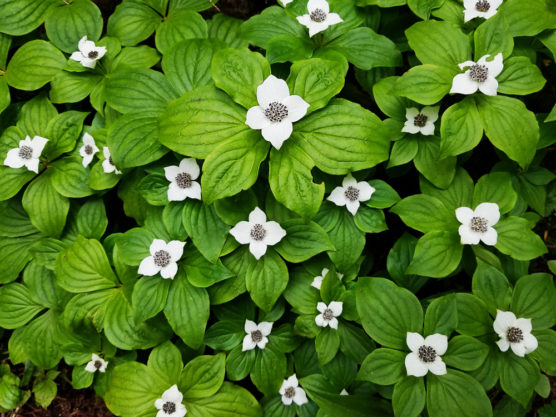
This plant grows a beautifully enviable emerald green, that’s often rare to see in gardens, considering all the other flowers that tend to aggressively crowd your garden. It needs acidic soil to grow, and its growth can reach up to 6-8 inches from where it was grown. It also prefers cooler climates, so Atlantans and Arizonians, you’re out of luck!
3. Ferns
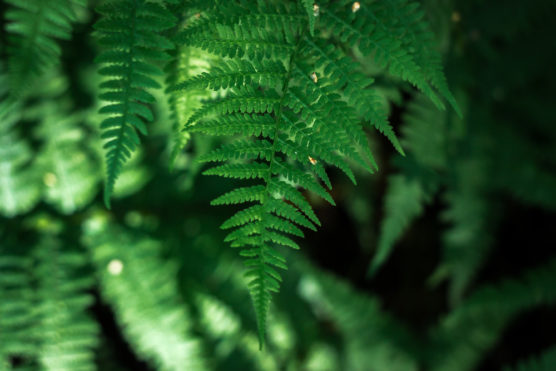
Ferns are often the plants that are overlooked because to be really honest, they’re kind the plant you very often drive past when you see all that greenery on the side of the road. They’re actually quite unique because while many plants reproduce from seeds, ferns are produced from spores.
As expected from the title of this article, this plant is also a shade lover. Some people may be put off by ferns, since it doesn’t produce actual flowers, but I think it’s also a nice addition of foliage. Why always have flowers when you can have some foliage too?
4. Sweet Woodruff
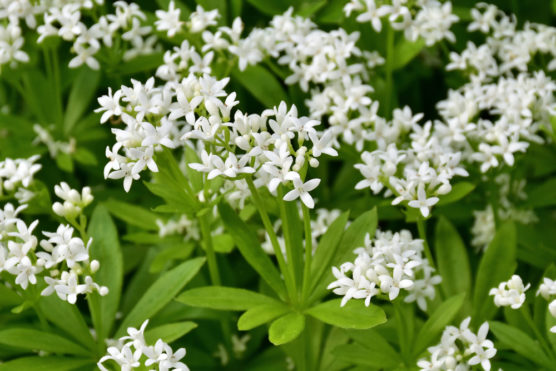
So personally, I feel like these flowers look like beautiful dandruff. Or as attractive as dandruff can aspire to be. Make sure that the seeds are stored in a cool or slightly cool place before they germinate. After germinating, they can be moved to a slightly warmer place.
The flowers that bloom resembles little stars, and look quite similar to the Jasmine flower, which is very prevalent in Asian culture. If the surroundings and conditions are near perfection, the growth will become quite aggressive. So if you’re cool with a hostile takeover, go ahead. Otherwise, plant with care.
5. Common Periwinkle
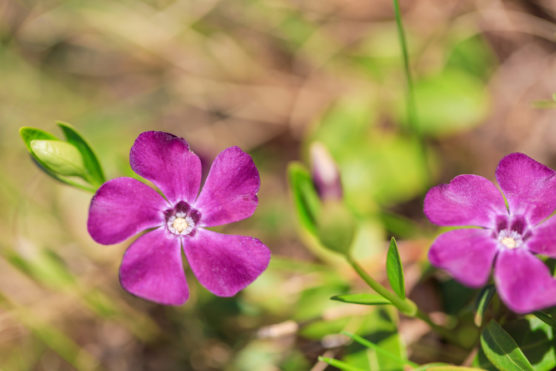
This is kinda like a Demogorgon in the plant kingdom. (Yes, I do love Stranger Things) It starts out all cute and sweet, and you think that it’s not a threatening plant.
But boy, are you wrong. If the conditions are even a little suitable, this plant pretty much takes over with its aggressive growth. In fact, many experts caution against growing it, because nobody wants the Upside Down in their own backyard.
6. Bugleweed
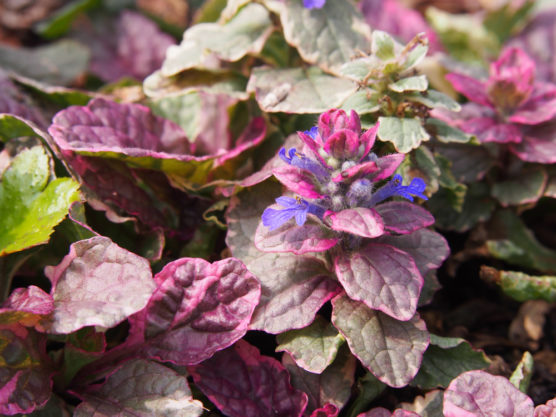
If there’s a contestant to the periwinkle for aggressive growth……Bugleweed volunteers as tribute. Experts go so far as to say to avoid planting it altogether.
No matter how much care and caution you might put into preventing the growth of this plant, it will somehow creep into the garden. So it’s basically like the perm trend in the 1990s. Horrible, but still worming its way back to current fashion.
7. Flowering Thyme
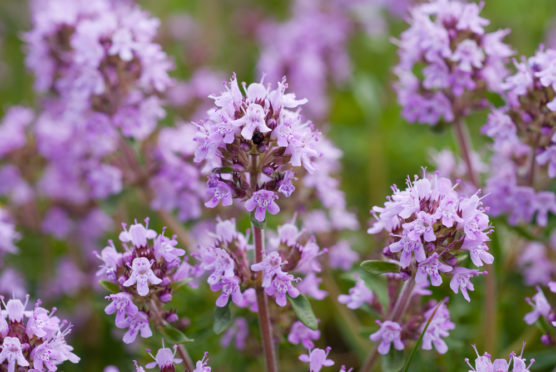
Thyme is kind of everyone’s favorite herb. It has a wonderfully aromatic smell and it can be used in many different cuisines and dishes. The plant can grow anywhere from about 6-12 inches, and they should be spaced about 12 to 24 inches apart while growing in order to ensure maximum space and growth during its development time.
8. Hellebore
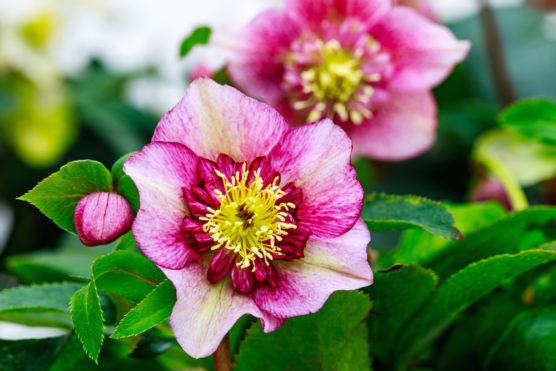
These beautiful flowers ranging in various shades of purple, pink, and light green make for a subtly colorful addition to your garden. There are different varieties like those with single flowers and those with a double.
Plus, the only maintenance actually that you actually need to do is just pluck off the dead flowers. Which, to be honest, I do on instinct anyway when I’m really bored with Netflix after a certain point.
9. Virginia Bluebells
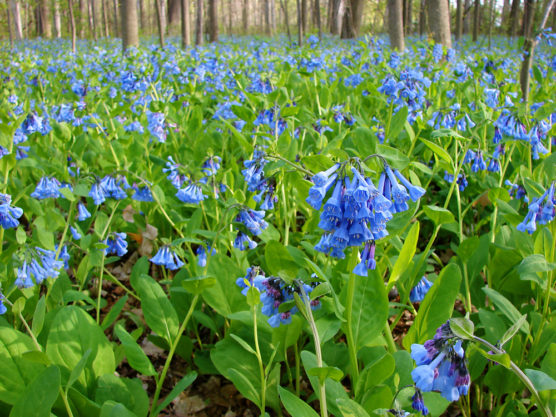
Bluebells are native to, Virginia, obviously. I feel like sometimes these names are as obvious as the movie Snakes on a Plane. If someone asks you what the movie is about, give them a strange look, and they’ll drop the question. This plant grows fully before and during spring but then goes dormant.
It can always be paired with other plants so that you don’t waste the gardening space, and you can always plant something else that covers the ground very well. Bluebells thrive in partial or full shade, and prefer moist, well-drained soil.
10. Columbine
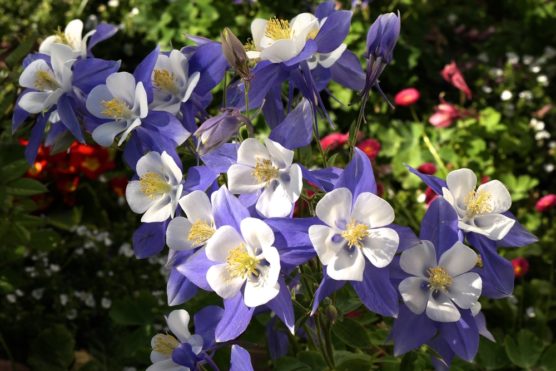
I know it’s not possible for purple stars to exist, but these flowers pretty much remind me of magical purple stars. Columbine flowers also prefer moist and well-drained soil.
For that to be possible, the plant has to grow in partial shade conditions, so that the soil retains its moisture and water. Otherwise, the soil will become extremely dry, and prone to erosion. To protect the soil during winter, you can layer some mulch on top, so that the plant can still grow.
11. Hosta
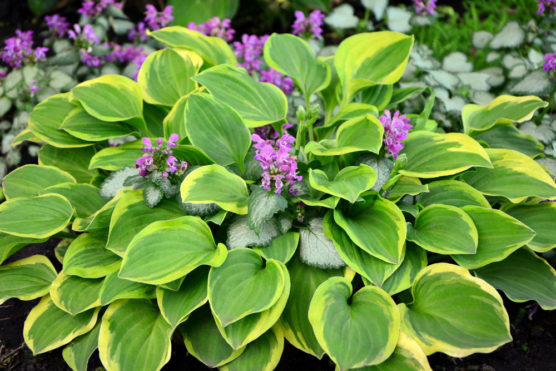
Hosta plants are the first plants that come to mind when we think of “perennial shade-loving” plants. There are many different varieties of plants, and they can be told apart based on the colors of their leaves.
The lighter the leaf color, the more sunlight it requires. So for a good shade cover, grow hosta plants that have darker leaf colors. Make sure that the seeds are in at least 3 m deep, and that the soil is slightly acidic before you plant the hosta.
12. Dwarf Astilbe
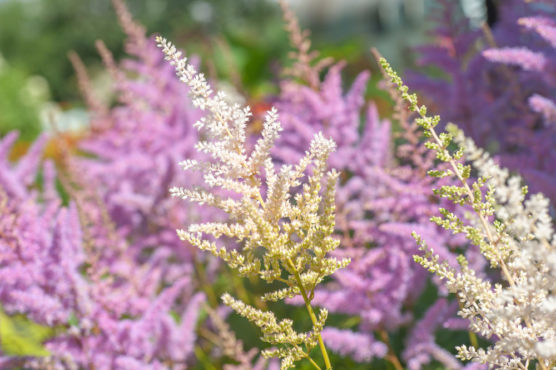
Good things come in small packages. Or in this case, plants that look like super cute purple trees. These plants look quite similar to ferns, but with a little more elegance. They come in a variety of colors and can tolerate different amounts of lights, so read the tag before you buy it.
13. Hydrangeas
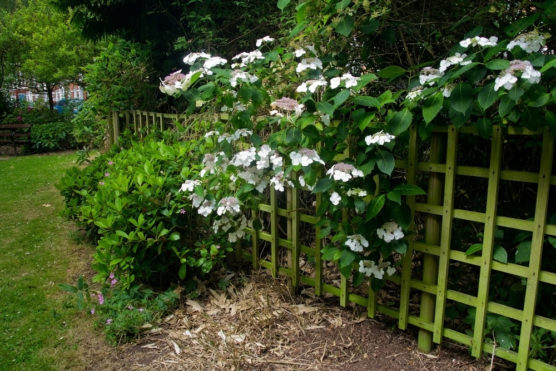
These flowers range from light shades of lilac to hues of blue and purple. The color depends on the acidity or alkalinity of the soil. The more acidic it is, the bluer it’ll be. The alkalinity of the soil gives a pink color to the hydrangea.
14. Lilly of The Valley
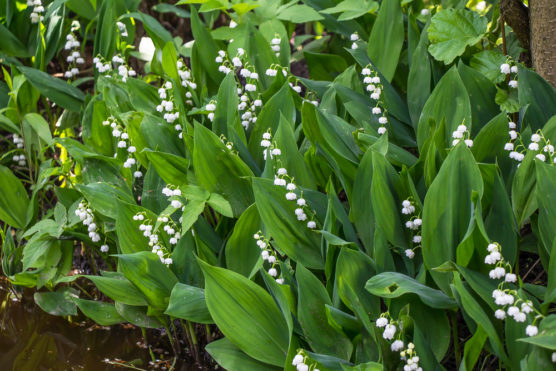
The flowers are small, and stark white, and can often be seen growing under the huge leaves that the plant sprouts. It also grows very aggressively via rhizomes called pips under the soil. So be careful as to exactly where you plant it. The plant can literally burn if exposed to excessive amounts of sunlight and must be planted at least 6 meters beneath the soil.
15. Moneywort
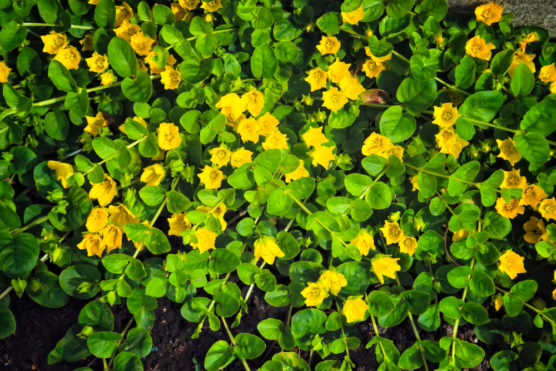
It has small, thin stems, and is similar to the fern since it doesn’t have any flowers. Only foliage! It does make for great aesthetics when it creeps over a wall or over that perfectly white-washed picket fence around the house. It even looks great while draped over a porch, giving your house an earthly, rustic vibe.
16. Trillium
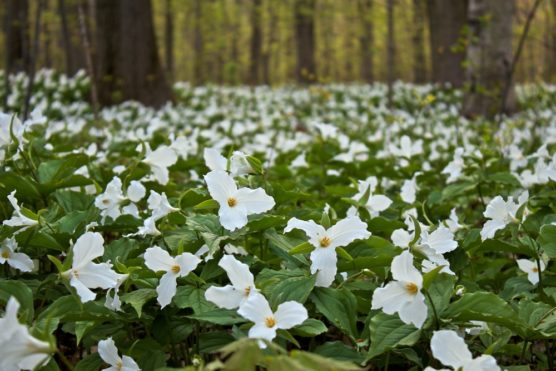
Trillium, though beautiful to look at and wonderful to have, are kinda the divas of the plant kingdom. If it isn’t planted in the right conditions originally, or if the flowers break while blossoming, there can be a lack of growth for the net 2 years. Really gives meaning when they say, “gardening is the work of a lifetime you never finish.”
17. Lungwort
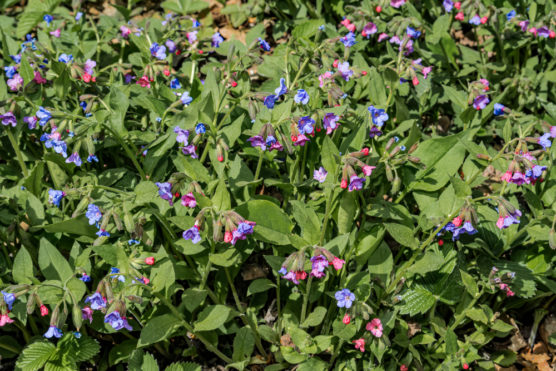
Funny name right? It actually got this strange name, because its flowers looked like diseased lungs. If that doesn’t ruin your appetite, I don’t know what will. It’s a must in gardens and ranges from bright purple to soft hues of pink. They’re about a foot tall, and spread about 12- 18 inches wide. So they cover more than a foot of ground, providing awesome ground cover to the soil.
18. Big Root Geranium
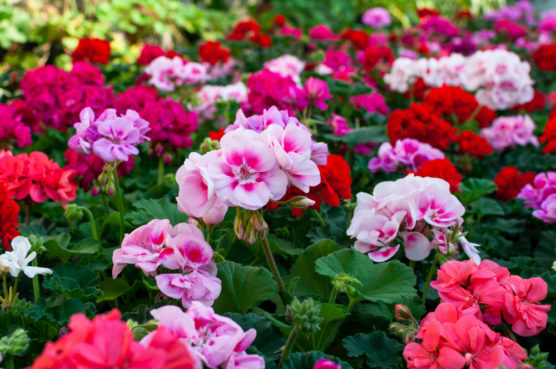
Its foliage is quite attractive in a garden, making it a favorite of gardeners. Plus who doesn’t like having a pretty garden? Aesthetics and garden are two words that are commonly associated with each other.
The leaves are well rounded, and cover a lot of ground and can grow up to 8-15 inches tall. They vary from different shades of cream to lavender, making it a subtly beautiful addition to your garden.
19. Spotted Deadnettle
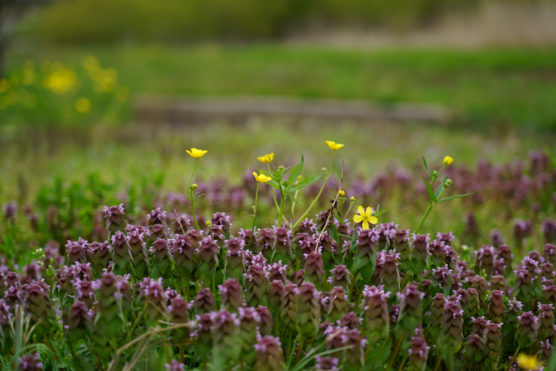
This plant has small leaves, and is spotted with silver-gray. Some even have a gold-yellow color spiked along the edges of the leaves. The flowers can be white, pink, or a subtly colorful lavender. Make sure that the deadnettle you buy has more silver spotted leaves since these are the types that thrive in the shade!
20. Siberian Bugloss
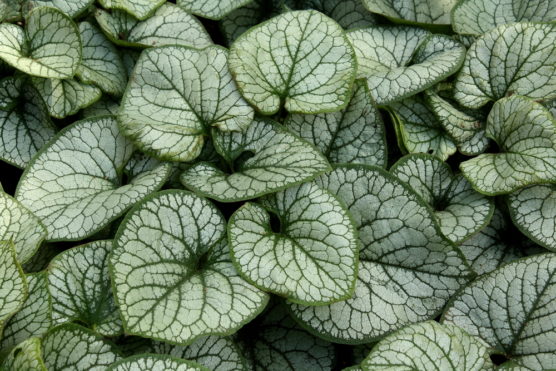
Nothing has a more beautiful, and color variety foliage like the Siberian Bugloss plant. The leaves themselves have intricate patterns, with splashes of emerald and white that are very pleasing to the eye. The leaves are quite broad and are often in the shape of a heart. They can grow about 6-8 inches outwards, and 10 inches in height.
21. Bishop’s Goutweed
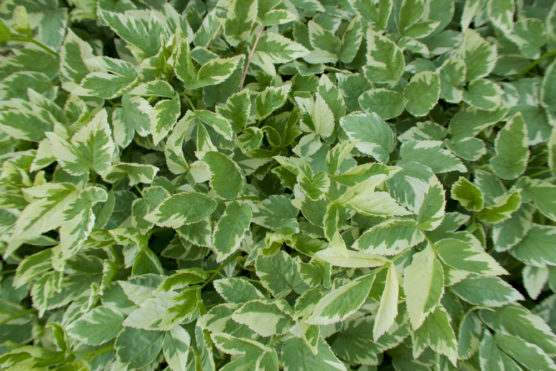
The goutweed plant can adapt to pretty much any soil. They do require mostly shady conditions, but can also grow in the sunlight. They prefer well-drained, moist soil and grow up to 10 inches tall. But seriously when you grow a lot of the goutweed, you may as well be growing a jungle in your backyard!
All in all, these plants cover a lot of ground, can grow in the shade, and don’t require a lot of care. If you ask me, it’s really not that hard to maintain a garden if you grow these types of plants!
